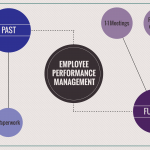The Pros and Cons of Today’s Appraisal Methods

We use ratings in our daily lives more often than you might expect. We look to Yelp for restaurant ratings, to Rotten Tomatoes for movie ratings; we can even find ratings on medical doctors and university professors. We ask people to rate our seminars and training events. Everywhere, ratings have snuck into decision-making processes in our everyday lives.
At work, ratings have long been part of the formal appraisal process. Traditionally, managers meet with their employees once (or twice) a year for a performance review and assign ratings on key performance points.
However, many workplaces are now opting to forgo these annual meetings for more frequent, less formal feedback sessions. For some, this means dropping ratings altogether; for others, it means a less visible form of ratings.
There are pros and cons to each method, and it’s up to managers to ultimately decide how to best help their employees succeed.
Formal Ratings
Just like with movie reviews, formal ratings assigned at an annual review likely don’t take into account all of the content. Often, too much emphasis is put on the most recent events. So if a recent negative event is top of mind for the manager, the employee’s success of six months earlier will not be as prominent. As such, there’s a good possibility of conflict — some push and pull — during the meeting (after all, it’s a human being who’s being rated).
Still, the formal yearly rating process, or review, provides dedicated time for manager and employee to discuss career points, as well as areas of achievement and improvement. Formal ratings require strong assessment on the manager’s part, and they keep things transparent — both of which are pros.
In the best cases, these type of appraisal systems work to motivate employees to reach the highest level, and to show them a clear path to success and promotion. In the worst cases, they cause anxiety and stress on both sides, and involve a lot of time and energy.
Shadow Ratings
With shadow ratings, there are still performance ratings, but they aren’t shared with the employee. This method lacks transparency and doesn’t provide employees with a clear understanding of what they need to do to succeed in their careers.
This type of appraisal does, however, require less time and energy on the manager’s part, and creates less conflict between manager and employee.
Shadowy Ratings
With shadowy ratings, no specific rating is provided to the employee, but the manager’s sense of their performance does affect their pay. This approach is a much less formal process than the annual review, and since the manager keeps some level of rating top of mind over the whole year, less time is spent agonizing over THE meeting.
But there’s also much less discipline in how managers use appraisal methods to measure performance. It’s difficult to track real success in a linear way, which means that it’s also difficult for managers to give an employee concrete examples showing the track to follow to a promotion.
No Ratings
Increasingly, there is discussion of doing away with ratings altogether. In those cases, pay raises are based on seniority (which is easy to track and easy to explain), rather than on performance. But when pay rewards aren’t tied to performance — well, that has its own problems.
As you can see, each method has its pros and cons. Whichever you choose, tweak it to fit your employees as best as possible (it doesn’t need to be perfect).
Yes, we rate restaurants and movies, but does that mean we should rely on ratings as an accurate measurement in the workplace?
Perhaps instead of focusing too deeply on appraisals, relying solely on ratings as an accurate measurement in the workplace, managers should concentrate on having more frequent feedback conversations, which will lead to better performance and, in turn, career development.
Author bio: Michael Bungay Stanier is the Senior Partner at Box of Crayons, a company that teaches 10-minute coaching so that busy managers can build stronger teams and get better results. His most recent book, The Coaching Habit, has sold a quarter of a million copies.
Along with David Creelman and Anna Tavis, Michael recently conducted and released a new piece of research, The Truth & Lies of Performance Management. Michael is a Rhodes Scholar and was recently recognized as the #3 Global Guru in coaching. Visit BoxofCrayons.com and http://boxofcrayons.com/pmresearch/ for more information.
Image source:
Tags: Employee Assessment, Performance appraisal, Performance Management





